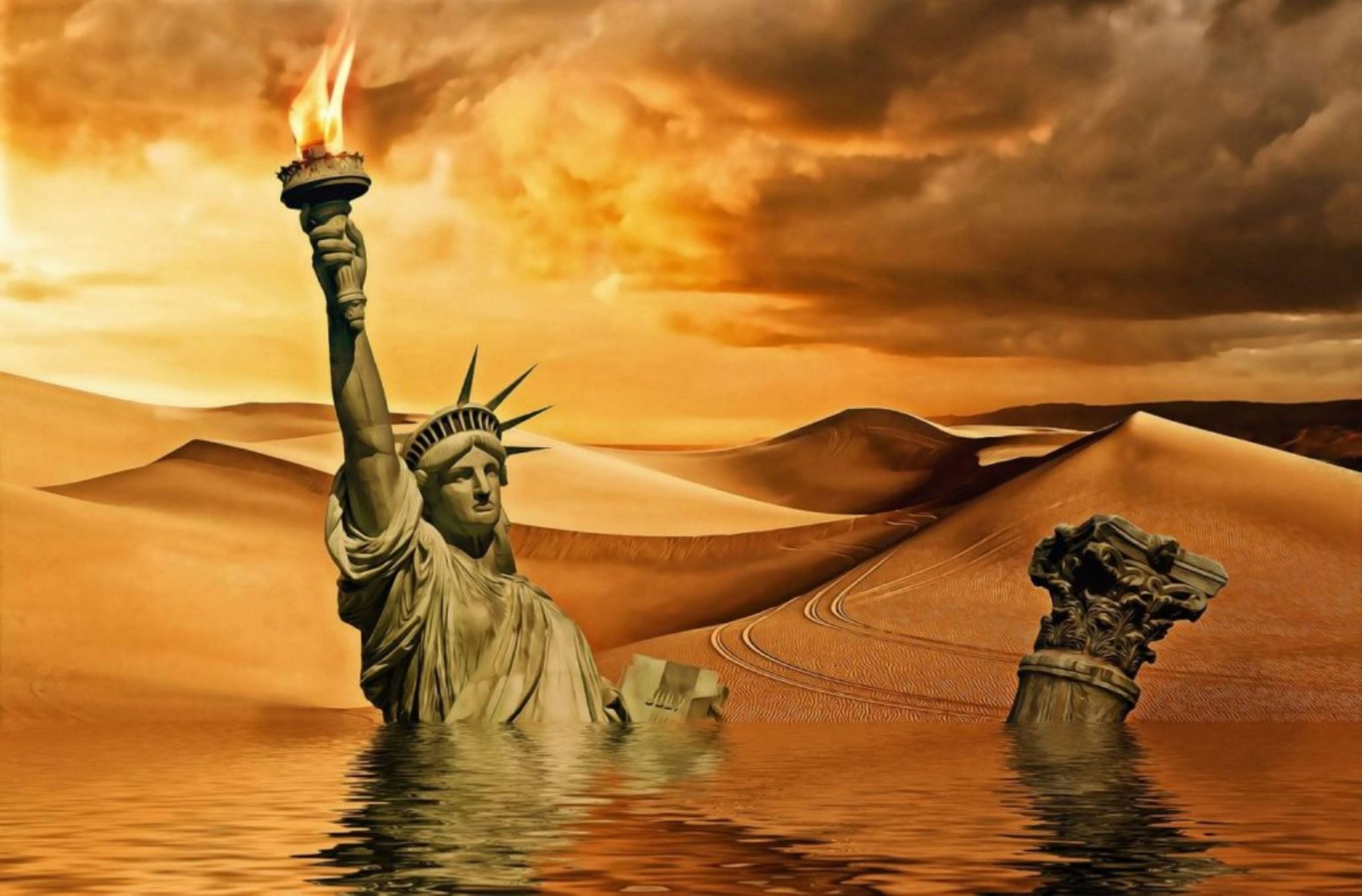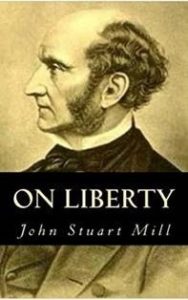Translating deep thinking into common sense
A Memo to the Thought Police on Liberty

By Walter Donway
October 3, 2018
SUBSCRIBE TO SAVVY STREET (It's Free)
To: The Political Correctness Thought Police
From: John Stuart Mill
Subject: On Liberty
Civil or social liberty, “the nature and limits of power which can legitimately be exercised by society over the individual … is likely soon to make itself recognized as the vital question of the future.”
Civil or social liberty, “the nature and limits of power which can legitimately be exercised by society over the individual … is likely soon to make itself recognized as the vital question of the future.”
When John Stuart Mill (1806-1873) published his brief book, On Liberty, in 1859, it became an instant classic. It sold an unimaginably large number of copies for a work on philosophy. Observers reported that students at Oxford and Cambridge had virtually memorized it. It raced through edition after edition. It is perhaps this work, more than any other, that made Mill, in the opinion of many, the most influential philosopher of the Nineteenth Century.
The Reform Act of 1832 had enfranchised many more citizens. Although Queen Victoria would rule from 1837 to 1901, and lend her name to the age, popular government was becoming a reality (although not entirely, women had not gotten the vote). Victorianism is a common synonym for strict cultural mores, social pressure to moral conformity, and the socially coercive evangelism of new religious sects taking their place beside the established Anglican Church.
Citizens who once viewed government by the monarchy and landed aristocracy with suspicion and alarm began to view government as theirs. Political giants such as William Gladstone campaigned with rhetoric intended to win widespread popular support for bills before Parliament. Mill feared a new and virulent form of tyranny.
“It was now perceived that such phrases as ‘self-government,’ and ‘the power of the people over themselves,’ do not express the true state of the case. The ‘people’ who exercise the power are not always the same people with those over whom government is exercised; and the ‘self-government’ spoken of is not the government of each by himself, but of each by all the rest. The will of the people moreover means the will of the most numerous or the most active part of the people—the majority … the people, consequently, may desire to oppress part of their number, and precautions are as much needed against this as against any other abuse of power … ‘the tyranny of the majority’ is now generally included among the evils against which society requires to be on its guard.”
“When society itself is the tyrant … its means of tyrannizing are not restricted to the acts which it may do by the hands of its political functionaries. Society can and does exercise its own mandates … it practices a social tyranny more formidable than many kinds of political oppression, since, though usually not upheld by such extreme penalties, it leaves fewer means of escape … enslaving the soul itself.”
Mill was not warning only against coercion exercised by government on behalf of ‘the people.’ He said “when society itself is the tyrant … its means of tyrannizing are not restricted to the acts which it may do by the hands of its political functionaries. Society can and does exercise its own mandates … it practices a social tyranny more formidable than many kinds of political oppression, since, though usually not upheld by such extreme penalties, it leaves fewer means of escape … enslaving the soul itself.”
Nevertheless, Mill was clear about the distinction between exercise of the police power—political oppression—and social pressure to conform. He did not use the word ‘censorship,’ but it seems clear he would have reserved that to describe government action. But he worried more about the threat to liberty—of thought, speech, publication, and action—from the power of social condemnation and ostracism. Therefore, this memo, although it is addressed to the “thought police,” the negative term for social pressure today on “incorrect” ideas, it properly might be addressed to “thought vigilantes” to capture the crucial social-governmental distinction.
What he feared was that these forces, legal and social, would be applied arbitrarily and without limits. The very essence of the defense of liberty was to define rules for the legitimate application of legal or social coercion.
“What these rules should be is the principal question in human affairs. … No two ages, and scarcely any two countries, have decided it alike; and the decision of one age or country is a wonder to another. Yet people of any given age and country no more suspect any difficulty in it than if it were a subject on which mankind had always been agreed. The rules which obtain among themselves appear to be self-evident and self-justifying. This all but universal illusion is one of the examples of the magical influence of custom. …”
Writing some 35 years ago, in an extended introduction to a new edition of On Liberty, Gertrude Himmelfarb, then Professor of History at the City University of New York, and a leading authority on the Victorian era, suggested that at least in terms of avowed belief (lip service?) our era was different. “In an age which prides itself on its liberation from all absolutes … there is a concept that has very nearly the status of an absolute. That is the idea of liberty. However much the idea may be violated in practice, however much it may be distorted in conception, the idea itself continues to exercise the ultimate authority which once belong[ed] to the idea of God, nature, justice, reason, or the ideal polity.”
Today, any limits or restraint on private, social condemnation and coercion brought to bear on “politically incorrect” ideas—if such limits indeed existed when Himmelfarb wrote—are long gone.
Today, any limits or restraint on private, social condemnation and coercion brought to bear on “politically incorrect” ideas—if such limits indeed existed when Himmelfarb wrote—are long gone.
In writing On Liberty, what limits did Mill hope to justify? What was his case for government and private restraint in the name of liberty? Where to draw the line between “authority” and liberty? His answer today, wrote Himmelfarb, had become the single most famous stricture, or principle, applied to public affairs—proposals for government involvement in any conceivable issue. She listed, as issues where liberty was the paramount consideration debated, “The use and abuse of drugs, crime and punishment, pornography and obscenity, industrial and economic controls, racial and sexual equality, national security and defense, ecology, technology, bureaucracy, education, religion, the family, sex. …”
She added “all come up against the ultimate test: the liberty of the individual.” It goes without saying, of course, that her list in no sense equated one-to-one with “liberal” positions. Modern liberals, she wrote, unlike liberals of Mill’s era, had virtually abandoned the idea of liberty as applied to property and the economy, welfare programs, and other social engineering. But they did continue to uphold it as sacred and inviolable in the intellectual/spiritual realm: speech, religion, the media, sexual relations, pornography, birth control, political protest. …
 Mill’s definition of the boundaries of legitimate liberty, penned more than 100 years ago, is still—honored or honored in the breach—one of the most famous ever given:
Mill’s definition of the boundaries of legitimate liberty, penned more than 100 years ago, is still—honored or honored in the breach—one of the most famous ever given:
“The object of this essay is to assert one very simple principle as entitled to govern absolutely the dealings of society with the individual in the way of compulsion and control whether the means used be physical force in the form of legal penalties or the moral coercion of public opinion. The principle is that the sole end for which mankind are warranted, individually or collectively, in interfering with the liberty of action of any of their number is self-protection … to prevent harm to others. His own good, either physical or moral, is not a sufficient warrant … the conduct from which it is desired to deter him must be calculated to produce evil to someone else. … In the part which merely concerns himself, his independence is, of right, absolute. Over himself, over his own body and mind, the individual is sovereign.”
This has become famous as the “harm” principle for setting limits on individual liberty in society.
It is a powerful statement. And Mill devoted much of his 125-page book to the attempt to make it clear. He did not succeed in making his meaning unambiguous; he did not succeed in drawing the “bright line” that precludes the gradual drift toward trespassing on the sacred ground of the individual’s liberty. But he defined the battleground where the limits of liberty, to this day, are contested.
(This is the first of three parts of “A Memo to the Thought Police on Liberty”)









